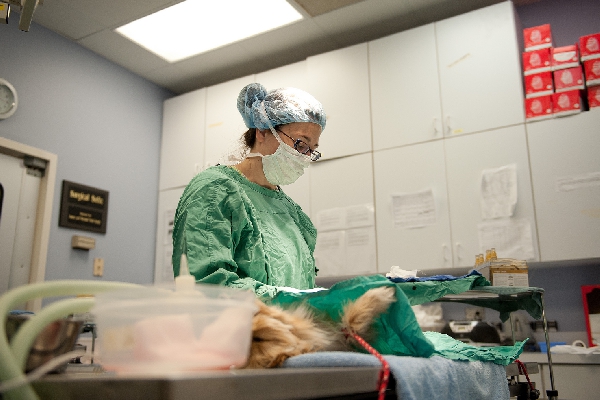Spaying and Neutering
Spaying and neutering involves removing or making inactive an animal’s reproductive organs so he or she cannot reproduce. It is the best way to reduce pet overpopulation as it stops animals from having unwanted litters.
Spaying and neutering also:
- Can reduce your pet’s cancer risk
- Saves on vet bills (sterilized pets are healthier)
- Eliminates messy heat cycles
- Greatly reduces urine odor, spraying and marking
- Reduces risk of roaming
- Increases your pet’s loyalty and bonding
- Protects children from dog bites (neutering reduces aggression)
- May lengthen your pet’s life (sterilized pets live longer)
All dogs adopted from PAWS Chicago have been spayed or neutered.
Microchipping
A microchip is a tiny chip about the size of a grain of rice that is injected under your dog’s skin between the shoulder blades near the base of the neck.
It never needs to be replaced and will remain active for the lifetime of your dog. The chip has no battery and emits no signal; it simply has a unique identification code.
After adopting your dog, be sure to update your contact information with the company that manufactures your dog’s microchip. Should your dog become lost, a quick wave of a microchip wand reads the identification number assigned to your dog so he can be reunited with you.
Dental Cleaning
Dental health is an important part of your pet’s overall health. Research has shown dental issues can cause other health problems, so it is important to have a yearly veterinary exam done of your animal’s teeth.
While preventative maintenance is necessary, your pet is also likely to need a dental cleaning at some point in his life. Dental cleanings require the animal to go under anesthesia so the jaw and teeth below the gumline can be assessed as this is where most disease occurs. Dental cleanings without anesthesia are not recommended as they cannot properly assess these areas.
During a dental cleaning, similar to humans, plaque and tartar is removed (scaling), then the teeth are polished. If any teeth are cracked, broken or diseased, they may need to be extracted.
Tail Docking, Ear Cropping and De-Barking
These procedures are not necessary to the health of a dog and are considered to be inhumane.
- Tail docking involves amputating the dog’s tail at varying lengths for aesthetic reasons. Dogs’ tails have many useful functions from aiding in balance to body language and cutting through sensitive nerves on the tail detracts from these functions.
- Ear cropping refers to the practice of reshaping a dog’s ears surgically. Cartilage and nerves are often cut and the ears are painful throughout the extensive healing process.
- De-barking is when the vocal cords are removed in an attempt to soften an animal’s bark. In removing the vocal cords, complications are not uncommon and may require additional surgeries to repair. Working with trainers to address the behaviors leading to barking is far more beneficial to the animal.

